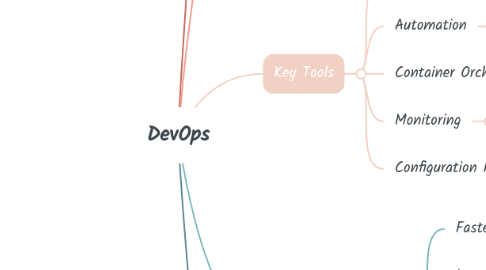DevOps
作者:Santiago Quitiaquez


1. Definition of DevOps
1.1. Intersection of "Development" and "Operations."
1.2. Cultural and practical approach to enhancing collaboration between development and operations teams.
2. DevOps Lifecycle
2.1. Planning
2.1.1. Define requirements and objectives.
2.2. Development
2.2.1. Create and write code
2.3. Testing
2.3.1. Verify and validate the software.
2.4. Deployment
2.4.1. Implement to production environments.
2.5. Operations
2.5.1. Maintain, monitor, and troubleshoot.
2.6. Feedback
2.6.1. Gather feedback and improve.
3. Key Tools
3.1. Version Control
3.1.1. Git, SVN.
3.2. Automation
3.2.1. Jenkins, Travis CI, CircleCI.
3.3. Container Orchestration
3.3.1. Docker, Kubernetes.
3.4. Monitoring
3.4.1. Prometheus, Grafana.
3.5. Configuration Management
3.5.1. Ansible, Chef, Puppet.
4. Benefits of DevOps
4.1. Faster and more frequent delivery of features.
4.2. Increased software stability and reliability.
4.3. Reduction in operational costs.
4.4. Enhanced collaboration and communication.
4.5. Quicker response to market changes.
5. Use Cases
5.1. Online businesses and startups.
5.2. Mobile application development.
5.3. Companies seeking agility and adaptability.
5.3.1. Amazon.
5.3.2. Netflix.
5.3.3. Google.
5.3.4. Facebook.
